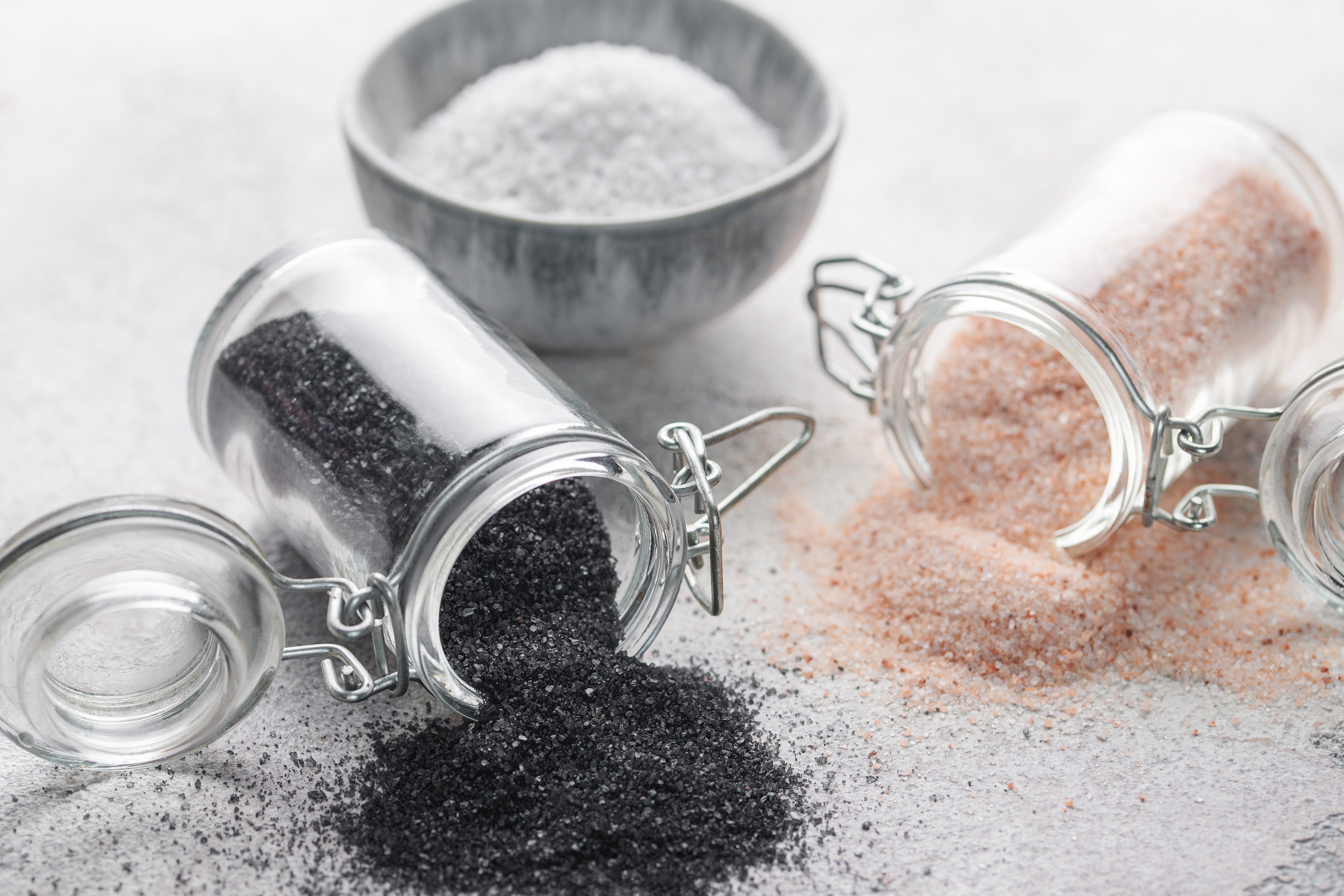Red Flags on a Nutrition Label That Could Be Raising Your Blood Pressure
In the bustling aisles of supermarkets, nutrition labels quietly whisper secrets that could significantly impact your health, particularly your blood pressure. Often overlooked, these labels are a treasure trove of information that can guide you toward healthier choices. Understanding them is crucial, especially when managing blood pressure—a condition affecting millions worldwide. This article delves into twelve critical clues on nutrition labels that could subtly influence your blood pressure, offering insights into how these details can make or break your dietary goals. Armed with this knowledge, you can navigate your nutritional landscape with precision and confidence.
1. Sodium: The Silent Culprit

Sodium is often the first thing health experts recommend monitoring to manage blood pressure. Nutrition labels provide a breakdown of sodium content, usually expressed in milligrams. The American Heart Association suggests limiting sodium intake to less than 2,300 mg per day, with an ideal limit of 1,500 mg for most adults. High sodium levels can lead to water retention, increasing blood pressure. When scanning labels, note the serving size—often misleadingly small—and calculate the total sodium intake based on your consumption. Choosing products with lower sodium content can significantly reduce your risk of hypertension.
2. Serving Size: The Deceptive Guide

Serving size is a crucial yet often misunderstood element on nutrition labels. It dictates the nutrient amounts listed, including sodium, fats, and sugars. Many people unknowingly consume more than one serving, inadvertently doubling or tripling their intake of these components. For those monitoring blood pressure, understanding and adhering to serving sizes is essential. Labels may list a serving as a single slice, cup, or piece, but real-life consumption can differ. Always adjust your calculations to reflect your actual intake to maintain accurate tracking of nutrients that influence blood pressure.
3. Potassium: The Balancing Act

Potassium is a vital mineral that helps balance sodium levels, making it a key player in blood pressure management. While most people focus on reducing sodium, increasing potassium intake is equally important. Nutrition labels are increasingly highlighting potassium content, reflecting its growing recognition in dietary guidelines. Foods high in potassium, such as fruits, vegetables, and legumes, can counteract sodium's effects. When examining labels, seek out products that offer a higher potassium-to-sodium ratio to support cardiovascular health and help maintain a balanced blood pressure.
4. Added Sugars: The Hidden Threat

Added sugars are not just a concern for weight management but also for blood pressure. Excessive sugar intake can lead to obesity, insulin resistance, and inflammation, all of which can elevate blood pressure. Nutrition labels now differentiate between natural and added sugars, making it easier to identify products with high sugar content. The American Heart Association recommends limiting added sugars to 25 grams per day for women and 36 grams for men. By choosing products with minimal added sugars, you can better control your blood pressure and overall health.
5. Trans Fats: The Unseen Enemy

Trans fats, often listed as partially hydrogenated oils, are notorious for their negative impact on heart health, including raising blood pressure. Although many food manufacturers have reduced trans fats in their products, they can still be found in some processed foods. Nutrition labels might list trans fats as zero if the content is less than 0.5 grams per serving, so scrutinize ingredient lists for partially hydrogenated oils. Eliminating trans fats from your diet can significantly improve heart health and help maintain a stable blood pressure.
6. Fiber: The Heart's Ally

Dietary fiber is a powerhouse nutrient that supports heart health and aids in blood pressure management. High-fiber foods help reduce cholesterol levels, improve digestion, and promote satiety, which can prevent overeating. Nutrition labels provide fiber content per serving, making it easier to identify fiber-rich foods. Aim for at least 25-30 grams of fiber daily, focusing on whole grains, fruits, vegetables, and legumes. A diet high in fiber can contribute to lower blood pressure and a reduced risk of cardiovascular disease.
7. Saturated Fats: The Double-Edged Sword

Saturated fats are another critical component to monitor for blood pressure management. While these fats are essential in moderation, excessive intake can lead to increased cholesterol and higher blood pressure. Nutrition labels list saturated fat content, allowing you to make informed decisions. The Dietary Guidelines for Americans recommend limiting saturated fats to less than 10% of your daily caloric intake. Opt for lean meats, low-fat dairy, and plant-based oils to keep saturated fat consumption in check and support heart health.
8. Cholesterol: The Misunderstood Marker

Cholesterol on nutrition labels often raises concern, but its relationship with blood pressure is complex. While dietary cholesterol has less impact on blood cholesterol levels than once believed, it's still important to monitor intake, especially for those with existing heart conditions. Nutrition labels provide cholesterol content, helping you manage your consumption. Focus on a balanced diet rich in fruits, vegetables, and whole grains to support healthy cholesterol levels and maintain optimal blood pressure.
9. Total Carbohydrates: The Energy Source

Carbohydrates are the body's primary energy source, but their quality and quantity can affect blood pressure. Nutrition labels break down total carbohydrates into dietary fiber, sugars, and starches. Prioritize complex carbohydrates, such as whole grains, which provide sustained energy and support heart health. Simple carbohydrates, often high in sugars, can lead to weight gain and increased blood pressure. By choosing foods with a balanced carbohydrate profile, you can maintain stable energy levels and support cardiovascular health.
10. Protein: The Building Block

Protein is essential for building and repairing tissues, but its role in blood pressure management is often overlooked. Nutrition labels reveal protein content, helping you ensure adequate intake. Lean protein sources, such as fish, poultry, beans, and nuts, are ideal for heart health. These foods provide essential nutrients without excessive saturated fats or cholesterol. Balancing protein intake with other macronutrients can support muscle health, weight management, and stable blood pressure.
11. Daily Value Percentages: The Contextual Tool

Daily Value (DV) percentages on nutrition labels offer a contextual tool for understanding nutrient content in relation to a standard 2,000-calorie diet. These percentages help you gauge whether a food is high or low in specific nutrients affecting blood pressure, such as sodium, potassium, and fiber. A DV of 5% or less is considered low, while 20% or more is high. Use these benchmarks to select foods that align with your dietary goals, particularly for managing blood pressure and supporting overall health.
Empowering Your Dietary Choices

Deciphering the intricate details of nutrition labels is empowering, particularly for those striving to manage blood pressure. By understanding the significance of sodium, potassium, added sugars, fats, fiber, and other nutrients, you can make informed decisions that support heart health. Each section of the label provides a piece of the puzzle, guiding you toward balanced dietary choices. As you navigate the world of nutrition, let these clues be your compass, steering you toward a healthier lifestyle and optimal blood pressure management.
